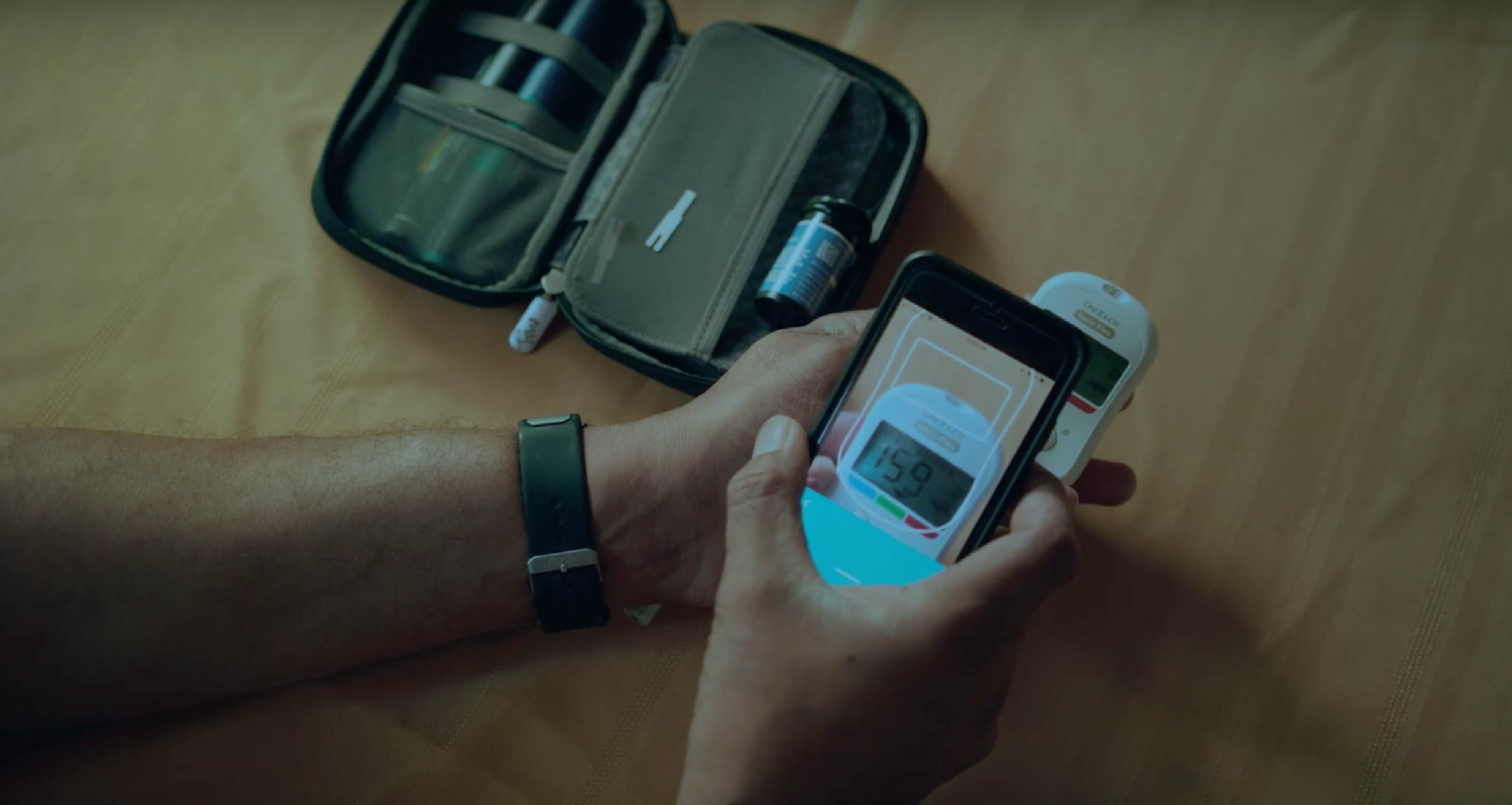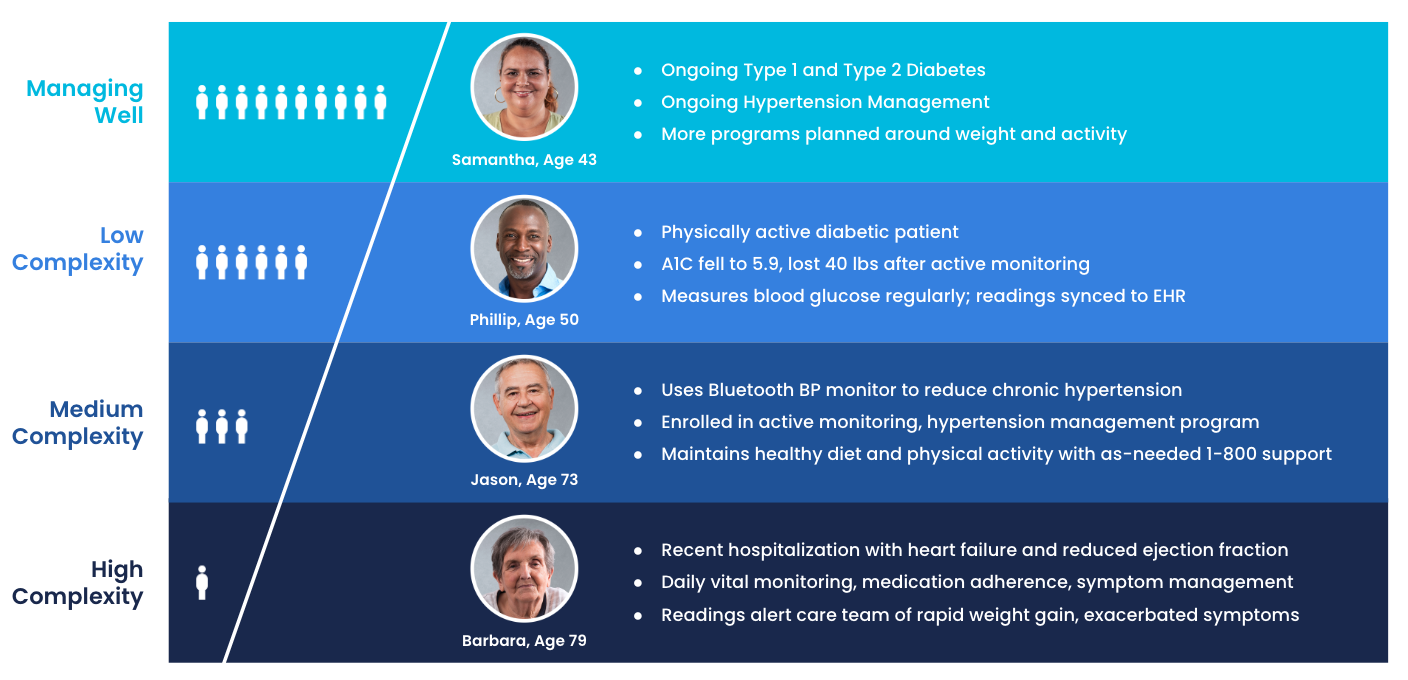Exploring a single partner for device software, purchasing, logistics, & support

Remote patient monitoring is an important tool in a clinician’s toolbelt — but it’s only a tool. Active, alert-based “monitoring” can identify anomalies that could precede worsening health, appropriate for higher-risk individuals who require more intervention. However, if the entire remote patient monitoring system is only designed to flag exceptions, clinicians are missing valuable insights from patients as they live their lives.
At best, remote patient monitoring should inform personalized care: finding the best approach to address the well-being of an entire community, no matter their health profile or chronic conditions. It means transcending preconceptions of how clinicians can use technology to truly treat every patient as an individual across the entire population.
We live in a personalized world
Patients are customers. They expect interactions with companies, from hospitals to hotels, tailored to their individual preferences. 71% of customers have come to expect personalized interactions from the companies from which they buy.
Healthcare is no exception to this trend. 76% of patients feel frustrated when leaving their medical appointments — disappointed in the limited time available with their doctor and lingering confusion about their own health. Without personalization, patients are left wondering about the best approach to improve their health and the right path to get there. As a result, nearly 70% of patients say they would switch providers for better services from another health system.
Clinicians should personalize care. What should that solution look like?
There’s an elephant in the room, and it looks like remote patient monitoring. RPM is labor intensive and technology intensive.
Patients receive a device in the mail, often a wearable or a tablet. Once the patient connects that device — a process that can require device battery insertion, charging, internet connection, sign-in, and troubleshooting along the way — clinicians receive remote patient health data. They flag exceptions in that data and notify a member of the patient’s care team to follow up about any issues.
Here’s the challenge: RPM is expensive. Equipment costs, nursing and support team payroll, and IT costs suddenly represent a steep obstacle to program success. While the results often speak for themselves — 74% of patients in one Validic-powered program reached stability after heart failure symptoms — it’s not an appropriate solution for every patient.

For the majority of patients without high-risk, high-complexity symptoms, there’s a better way to manage care – it involves a single solution, no matter what the patient needs, embedded directly into the EHR without the need for doctors to learn anything new.
Personalizing everyday care with everyday data
The current healthcare trajectory is quickly reaching a tipping point. 84% of clinicians say they don’t have enough time in the day to treat their patients adequately. An estimated 99.5% of American adults will have at least one chronic condition by 2050. Rising patient counts and worsening conditions indicate that clinicians will become more important — and less available — with each passing day.
Modern clinicians don’t need any more tools. They need better tools — tools that allow them to spend less time analyzing data and more time learning from it. The right personalized care solution will integrate patient data directly into a patient’s EHR, without any further steps from clinical staff members.
Providers also need a way to make personalized care a practical reality, leveraging technology as a force multiplier to trade episodic care for personalized care. That’s why we acquired Trapollo, a connected health and device logistics provider already helping healthcare organizations care for patients at home.
Logistics + patient data: Actionable care for entire populations
Alongside our current patient data integration services, in-house device logistics and technical support capabilities make Validic the most proven way for healthcare providers to personalize care for entire populations.
We’ve expanded to offer an entire suite of logistics services for patients:
Forward logistics to fulfill orders and ship blood pressure monitors, weight scales, pulse oximeters, and more.
Reverse logistics to recover kits for processing after health programs conclude or to directly troubleshoot technical issues.
Tablet Mobile Device Management (MDM) to image devices with the right mobile device management application, initiate cellular service, and enable immediate use.
Phone support to onboard patients or provide answers about device performance, function, or data collection.
Direct device sales from manufacturer partners.
Chief Operating Officer Brian Carter recently joined VP of Product Frank Rydzewski and Senior VP and GM of Operations Steve Nester to explore our newly-added logistics and support services that create a one-stop shop for personalized healthcare.
Access that full, on-demand webinar recording for more information on the value of a single- source solution. Learn how your health organization can create customizable health programs, tailored to the needs of each individual.
Stay updated with Validic in 2023 by joining our email list and following us on X and LinkedIn.